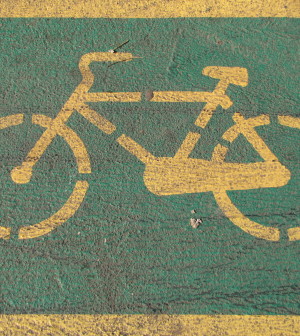- Double Mastectomy May Offer No Survival Benefit to Women With Breast Cancer
- Toxic Lead Found in Cinnamon Product, FDA Says
- Certain Abbott Blood Sugar Monitors May Give Incorrect Readings
- Athletes Can Expect High Ozone, Pollen Counts for Paris Olympics
- Fake Oxycontin Pills Widespread and Potentially Deadly: Report
- Shingles Vaccine Could Lower Dementia Risk
- Your Odds for Accidental Gun Death Rise Greatly in Certain States
- Kids From Poorer Families Less Likely to Survive Cancer
- Tough Workouts Won’t Trigger Cardiac Arrest in Folks With Long QT Syndrome
- At-Home Colon Cancer Test Can Save Lives
Only 1 in 3 HIV-Infected Black Americans Gets Effective Treatment: Study


Even though drugs that can keep HIV at bay are available, only about one in three black Americans with the AIDS-causing virus have their infection under control, U.S. health officials said Thursday.
According to a new report from the U.S. Centers for Disease Control and Prevention, many HIV-positive black patients are not getting the care and treatment needed to live healthy lives, keep the virus under control and prevent passing it on to others.
“We know that treatment can help people with HIV live long and healthy lives and also prevent transmission of the virus to others,” said Donna Hubbard McCree, associate director of CDC’s Health Equity Division of HIV/AIDS Prevention.
The problem is particularly acute among black men, who have especially high rates of HIV infection, she said. According to CDC statistics, one in every 16 black men will become infected with HIV during his lifetime.
Using data from the National HIV Surveillance System and the Medical Monitoring Project for 2010 — the latest data available — CDC researchers found that among blacks with HIV, 75 percent had received care, but only 48 percent continued with that care.
In addition, only 46 percent had been prescribed powerful antiretroviral drugs to help suppress HIV, and only 35 percent had achieved the treatment goal of viral suppression. Viral suppression means that HIV levels are suppressed to a level that will help keep the patient healthy and reduce the risk that he or she will transmit HIV to others.
The researchers also found that black men had lower levels of care and viral suppression than black women. And young black men were at highest risk of being undertreated: Men under 25 were less likely to get treatment or achieve viral suppression than older black men, the report found.
McCree said that for black Americans, especially, the HIV/AIDS crisis is far from over.
“About half of the estimated 1.1 million people in the U.S. living with HIV are African American. When we look at the 2010 data, about half of all the new infections each year also have been among African Americans,” McCree noted.
Since there is a higher prevalence of HIV among blacks, this means that there is a greater HIV risk with every sexual encounter among black people, she said.
There are also social and environmental factors that place black Americans at greater risk for HIV, McCree said.
“Some of these factors might be associated with the things we are seeing with this data — things like health insurance and access to care. If you don’t have the means to see a doctor, you may not get treatment. If you cannot afford the basics in life, you may end up in circumstances that increase your risk and affect your care,” she said.
In addition, decades into the HIV/AIDS crisis, stigma about HIV still persists. There is “a stigma around staying in care, a stigma around HIV in general,” McCree said.
“If we are going to have an impact on what’s going on in terms of the disproportionate rates of HIV among the African American community, as well as what we are seeing in treatment and care, we are going to have to tackle some of those social and economic issues,” she explained.
One expert said that more must be done to get everyone with HIV into proper care — and to stick with that care.
“In this country our ability to treat HIV is fantastic, it’s superb, and it’s very likely that a person who is in regular care will have that viral load controlled,” said Dr. Bruce Hirsch, an attending physician in the division of infectious diseases at North Shore University Hospital in Manhasset, N.Y. “This report documents our failure to follow through on the therapeutic power of the medications we have,” he said.
But there are steps that can be taken to improve HIV care and prevention.
“HIV is totally preventable,” McCree said. “There are things we can do — talk about it, protect ourselves and our partners, get tested, get involved and get treated.”
Commenting on the report, Chris Collins, vice president for public policy at amfAR: The Foundation for AIDS Research, said that “we have a long way to getting access to care for African Americans in the United States.”
Collins said, “The research has been telling us that black gay men are no more risky, in fact are less risky, than their white gay counterparts, and yet their infection rates are much higher. There are a lot of reasons for that, including that fewer African Americans are getting the HIV treatment they need.”
So, Collins explained, “it isn’t a behavior issue among black gay men. It is an issue of a health care system that has failed to meet their needs, so we’ve got to address that.”
The new study was published in the Feb. 7 issue of the CDC’s Morbidity and Mortality Weekly Report.
Another article in the same issue of the journal evaluated “partner services” outreach provided to black gay and bisexual men who had been newly diagnosed with HIV in North Carolina.
The researchers found that these outreach efforts can be an opportunity to help get HIV-infected partners in medical care. Among other things, partner services identified contacts of those diagnosed with HIV, to notify them of a possible exposure.
Many of the black men contacted already knew they had HIV, did not have their virus under control, and accepted assistance to go back into care, the researchers found.
Partner services may be particularly important for young, black gay and bisexual men, who are disproportionately affected by HIV and less likely to remain in care, the researchers say.
More information
For more on HIV/AIDS, visit AIDS.gov.
Source: HealthDay
Copyright © 2024 HealthDay. All rights reserved.










